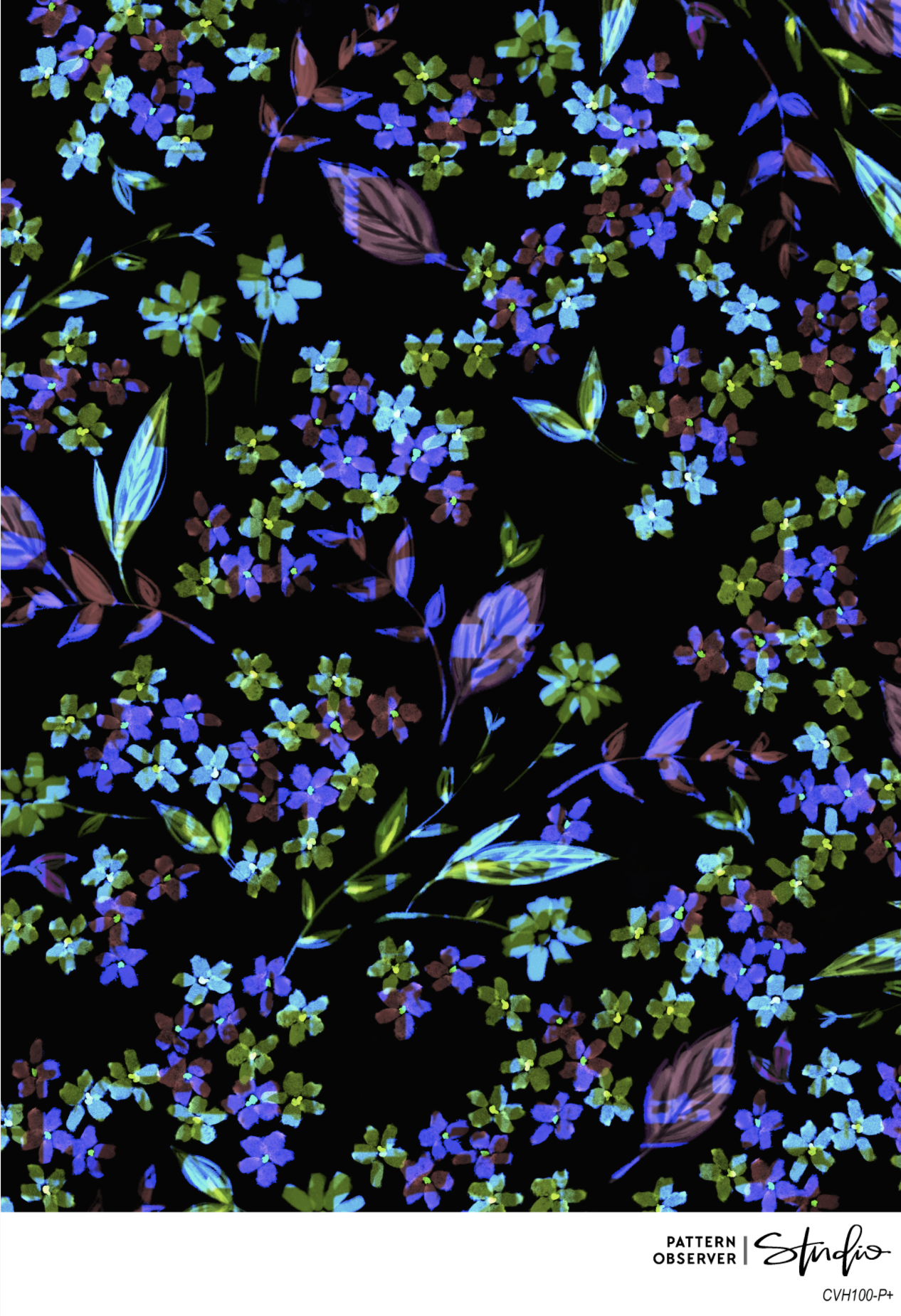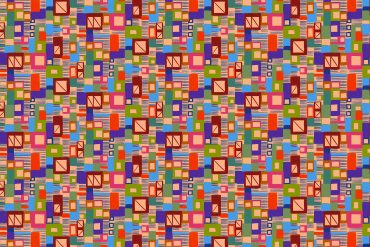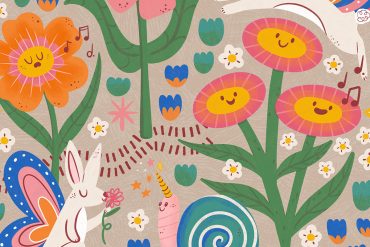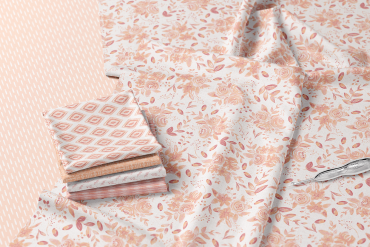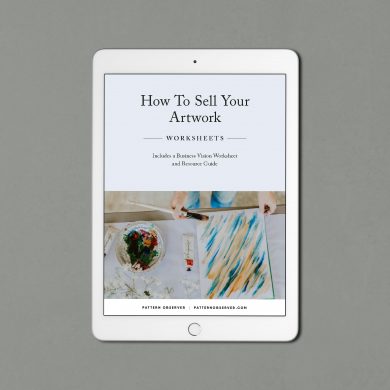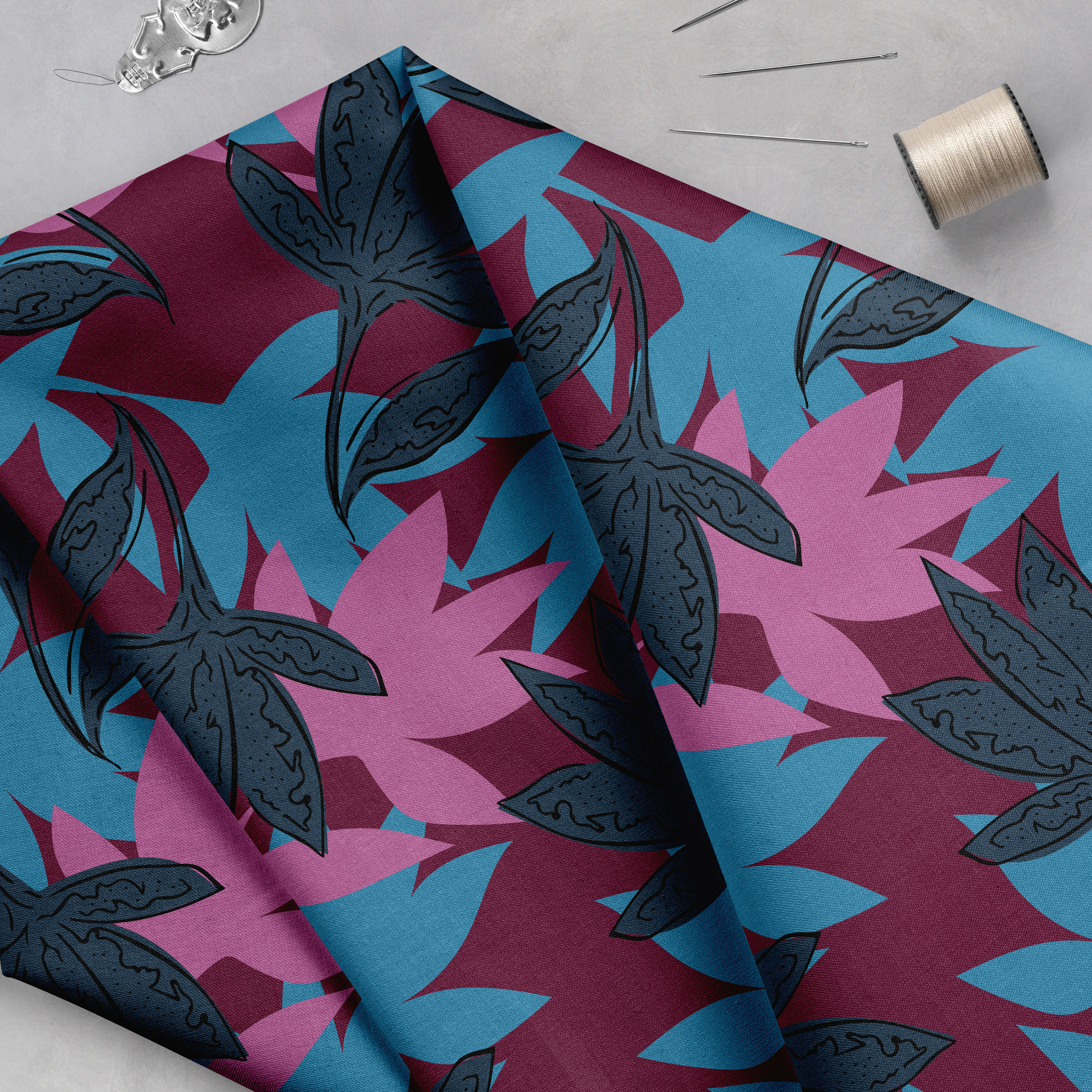Are you curious about how to turn your illustrations and sketches into repeating pattern layouts? In this post I’ll describe some of the most popular pattern layout styles in the textile and pattern design industries. Additional links to various posts and trainings that could be beneficial will also be included.
First…
What is a Repeating Pattern Layout?
A pattern layout is simply the way in which your motifs are arranged within the pattern. As you are creating your patterns, you’ll find that not all layout styles work for all motifs. Therefore, it’s important to understand the options that you have when creating repeating pattern layouts. If you are struggling with a particular pattern, try taking a break and then trying a new style.
Now, let’s cover the 5 most popular repeating pattern layouts.
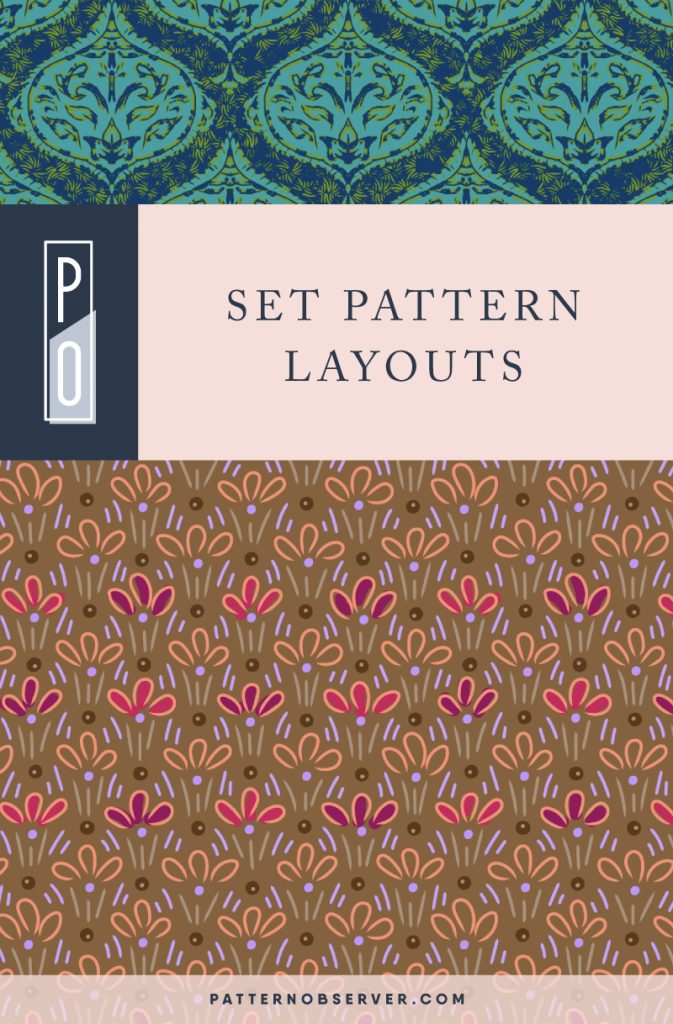
1: Set Pattern Layouts
Set layouts are repeating pattern layouts in which motifs are repeated in exact measured spaces. They are even and symmetrical. There may be slight variations in color, line weight, or other elements, but these layouts are evenly spaced and balanced.
- Markets: While popular in all markets, set layouts are most commonly used in home decor, wallpaper, quilting, and paper products.
- The benefits of set layouts are that they are simple to create, especially in Illustrator’s Pattern Maker tool (affiliate link) and they appeal to a wide variety of consumers.
- Set layouts are a great addition to any designer’s portfolio, but your entire portfolio should not solely consist of set layouts. When designers are first getting started, they tend to go overboard with this design style.
Remember, having a variety of different layout styles in your portfolio is important to attracting more clients.
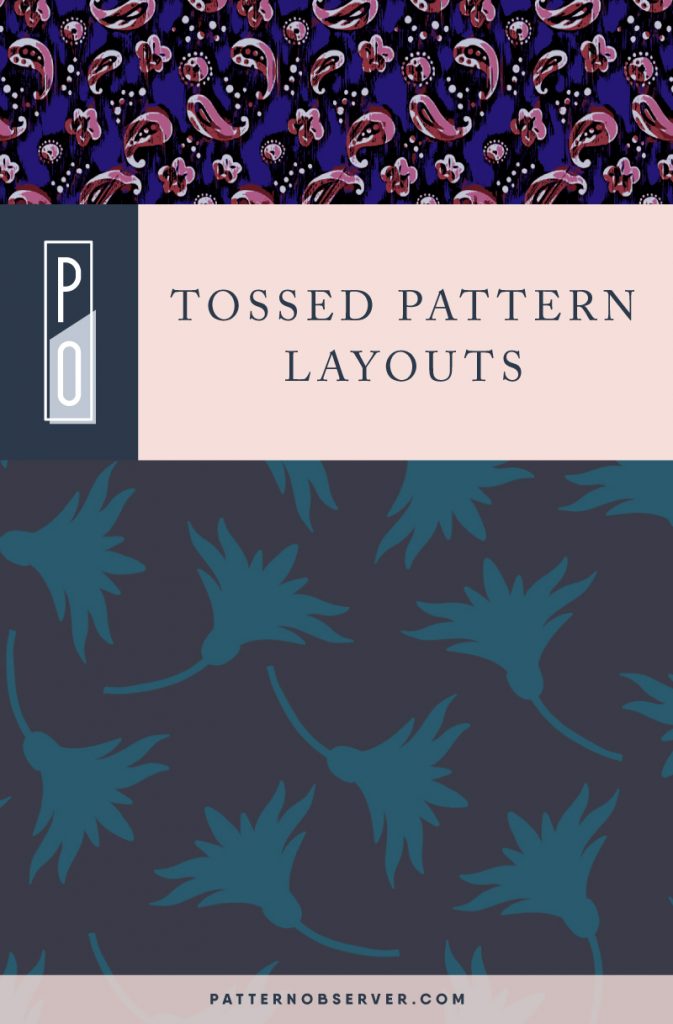
2: Tossed Layouts
- Imagine you threw a handful of flowers in the air. The pattern they would make as they randomly land on the page is an example of a tossed layout. Some flowers would face right; others left. Some point up while others point down. This is how motifs in a tossed layout are arranged within a repeating pattern layout.
- Markets: Tossed layouts are most commonly used in stationery, quilting, home décor, and children’s markets.
- What is fabulous about tossed layouts is that they allow many opportunities to play with design elements and create varied results. Motifs can be spaced apart or they can intersect and even overlap. These motifs are always used evenly and tossed within the full layout.
When using a tossed layout remember that making your motifs look random and tossed is key. If you have too many motifs facing in one direction your layout will begin to look unbalanced and unintentional lines will begin to be visible within your layout. Explore this post for more tips on developing tossed layouts.
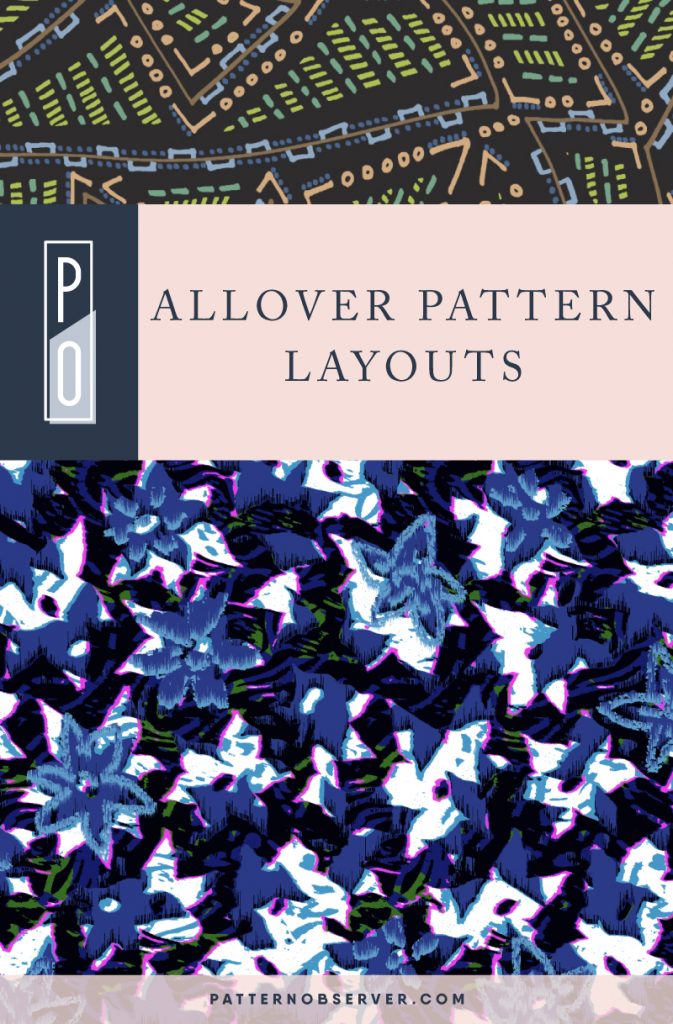
3: Allover Layouts
- Allover pattern layouts are those in which motifs are arranged in a compact, balanced way. I personally feel that allover layouts are a “catch all” category. If you see a pattern layout in your research and you can’t pinpoint exactly what style it is, it is probably an allover pattern layout. In allover layouts you’ll typically see motifs overlapping and very little background color will be visible.
- Markets: All over layout are popular in all markets.
- The major benefit of this repeating pattern layout is that it’s fairly easy to create and maintain balance within your design. This makes this a great pattern layout to try if you are new to pattern design and have already mastered set layouts.
- The drawback to allover layouts is that they can begin to feel overly compact and heavy.
Just like set layouts, remember not to go overboard with allover layouts within your portfolio.
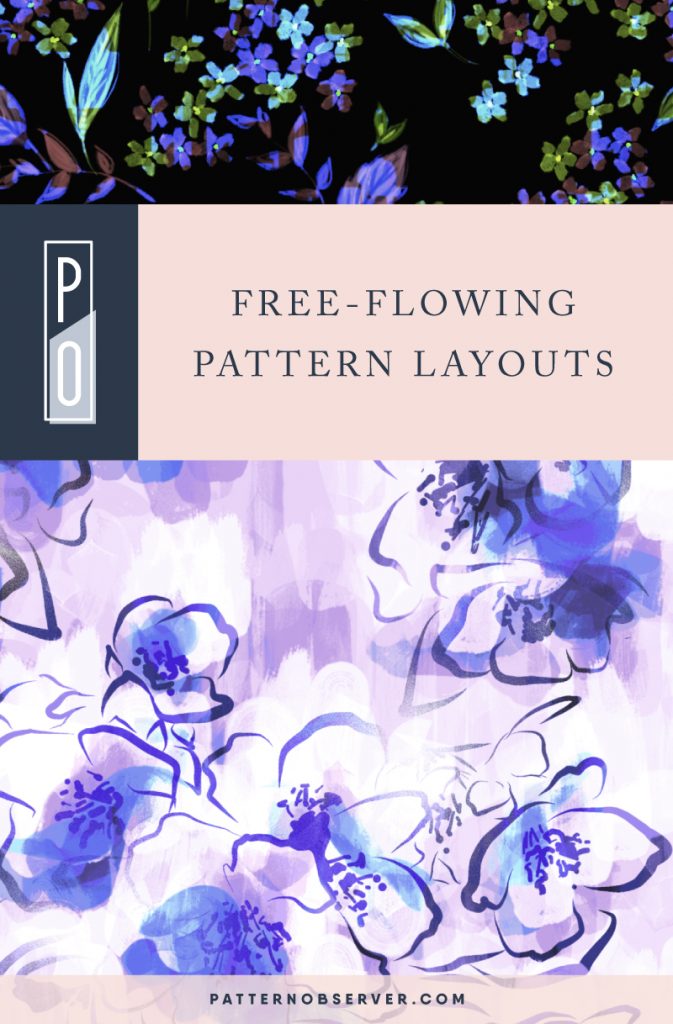
4: Free-flowing Layouts
- Free-flowing layouts have strong movement and flow throughout the pattern. Motifs are densely concentrated in some areas but sparse in others, allowing more background color or pattern to be visible. However, the overall repeat is balanced, and the eye easily follows the flow of motifs and color.
- Markets: Free-flowing layouts are popular in fashion and home decor where having large areas of open ground is acceptable. In markets such as the quilting industry, where large areas of open ground are less common, consider adding a texture or second pattern to the open areas of your repeating pattern layout.
- While more difficult to create, free-flowing layouts are a stunning and eye-catching addition to any designer’s portfolio.
It takes time to figure out this method of pattern layout, but trust me, it’s worth it!
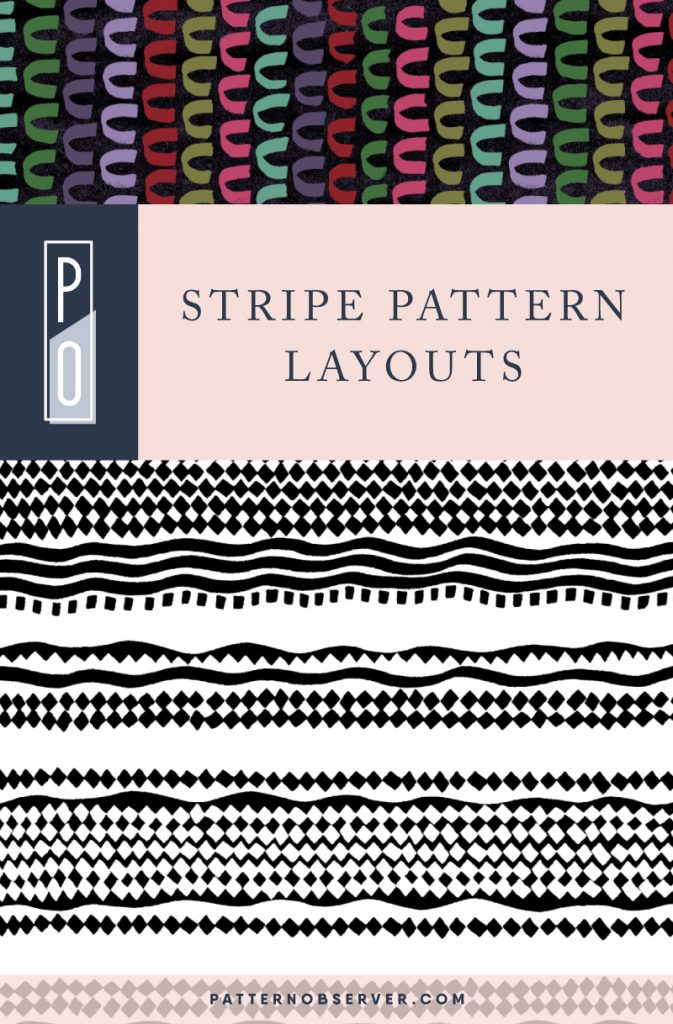
5: Stripes
- Stripes are defined as repeating pattern layouts in which the motifs or colors are used in long narrow stripes. Note: stripes don’t just have to be solid bands of colors! That’s exciting, right? Consider using motifs and textures within your stripes, as well.
- Markets: Stripes are popular in all markets.
- When creating stripes take the time to experiment with color placement and vary the width of your stripe. While stripes are relatively simple to create, a well-designed stripe is a thing of beauty.
Observe how the colors flow into each other as your eye moves up and down the stripe. Finessing this may be quite difficult but again, it’s worth it!
New Opportunities In Repeating Pattern Layouts
This month the focus of our Textile Design Lab has been exploring new opportunities. We have explored new opportunities within our business through mindfulness and goal setting exercises; we also explored new opportunities within our design work by considering how we can use lesser-known layout styles within our portfolio.
As you begin to create repeating pattern layouts from your motifs consider the opportunities that you have within your portfolio. Which layout styles do you rely too heavily upon? Which layouts have you been ignoring?
If you want to explore more repeating pattern layout tips, please get started with this free-training or subscribe to our newsletter to stay in touch!

